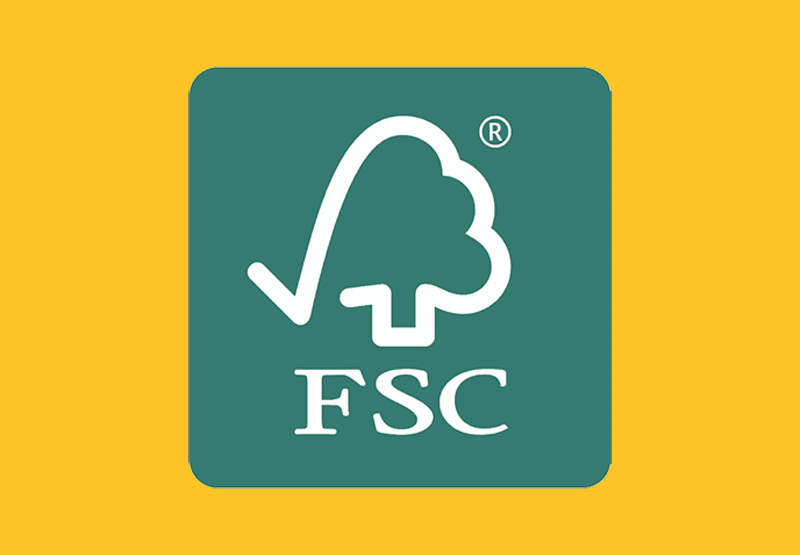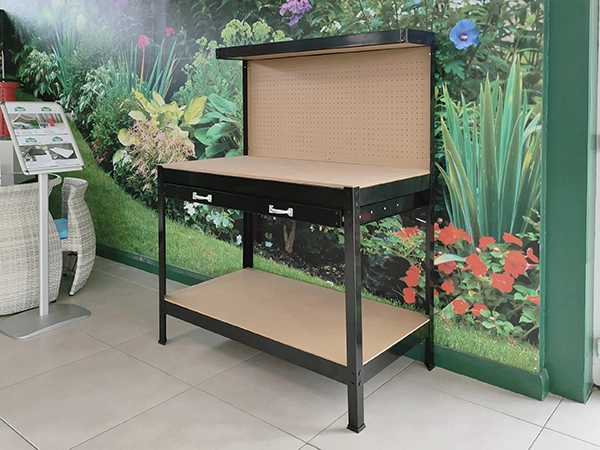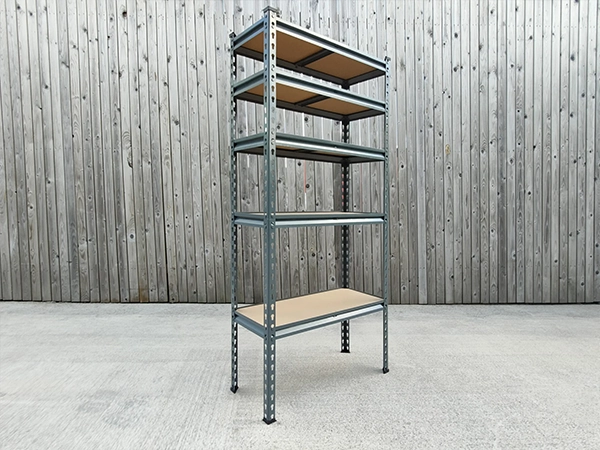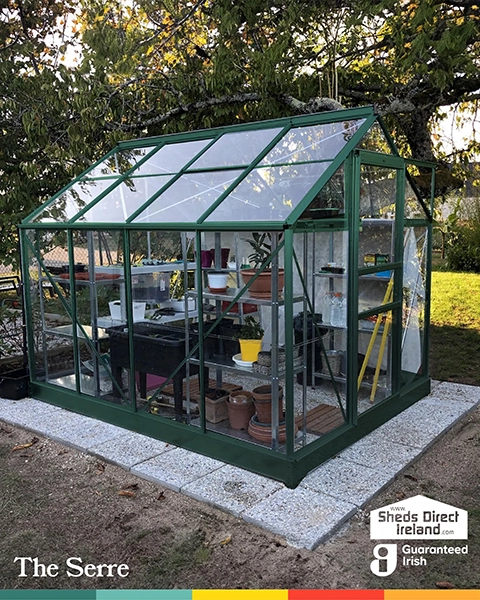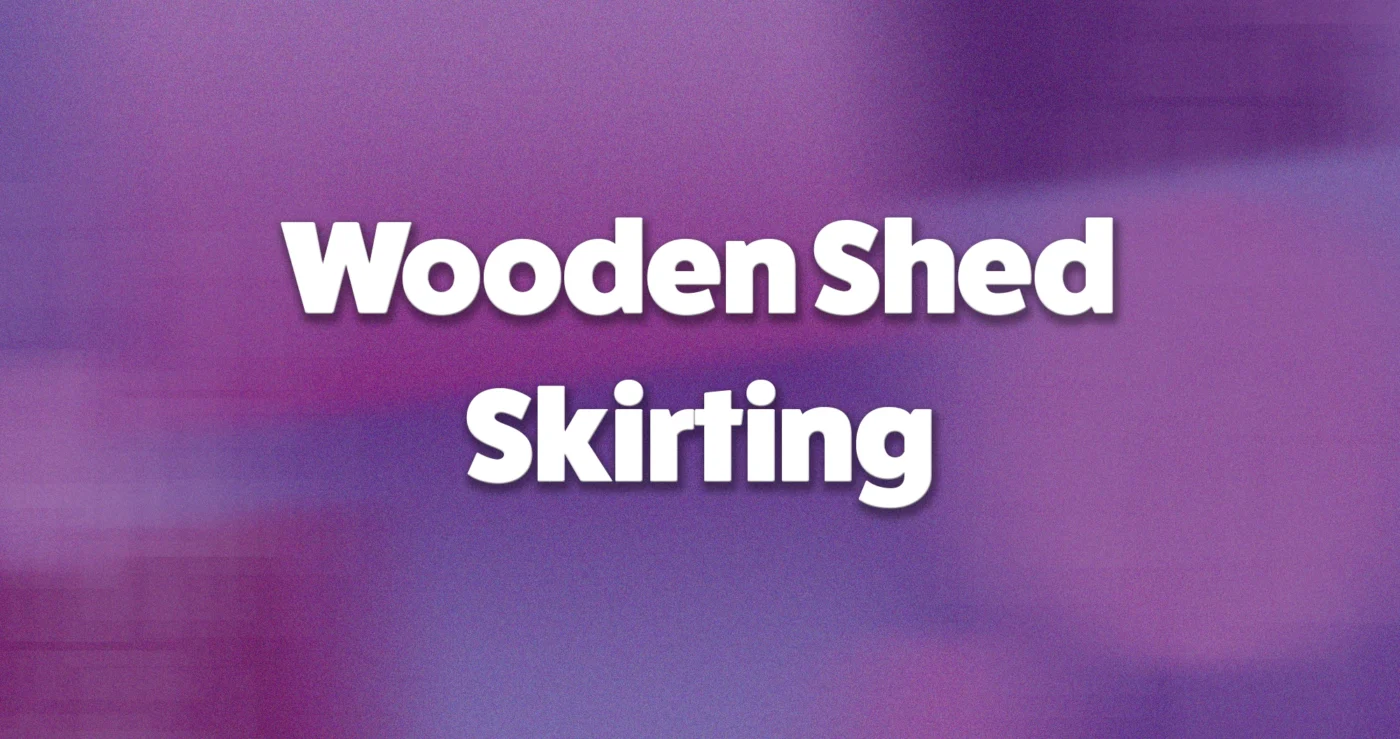Wooden Shed Skirting
Wooden Shed skirtings are basically just long pieces of timber that are used to neaten up the bottom of a wooden shed. We typically provide two lengths of it – one for the front of it and the other for the most visible side of the shed. It can add some protection from the elements, but not much. Skirting is mostly added to enhance the outwards appearance of the shed. It doesn’t always hide everything and ideally, it shouldn’t actually touch the ground.
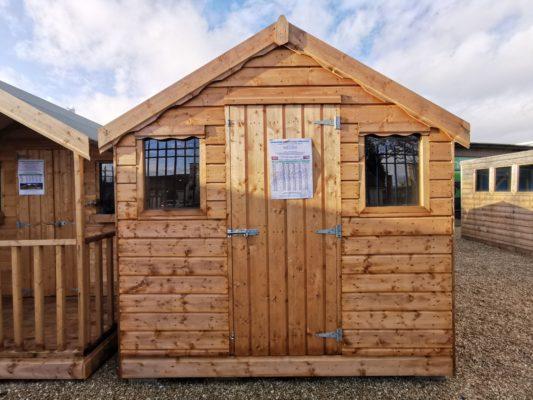
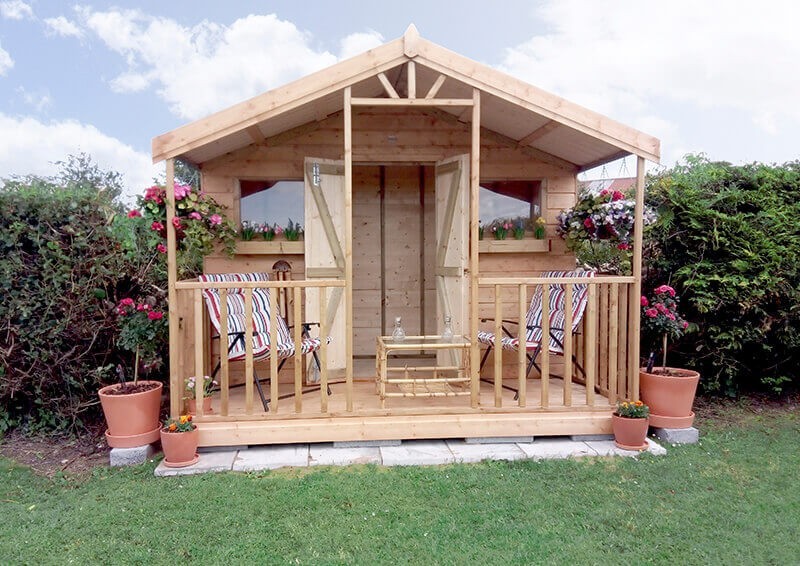
Above, you can see two examples of wooden sheds – one in our showroom and another in a customer’s garden. The skirting in the first appears to ‘float’ above the gravel and in the second, the supporting blocks underneath, are slightly visible. This is how the skirting will appear for the majority of wooden sheds that we sell.
Why don’t they touch the ground?
Okay, first and foremost, depending on what size blocks you’ve gotten, some might touch the ground. We recommend 4″ solid blocks for under your wooden shed. This will be enough to raise the shed up and give you a little gap between the ground and the bottom of the skirting. If you’ve sourced smaller bricks, or if your garden slopes, the skirting may touch the ground.
Now, back to ‘why don’t they touch the ground?’ question. Well, the whole point of building a wooden shed up on blocks, is to prevent the conditions that would lead to premature rotting of timber. Ireland is, well, a damp place. Wood that is in constant contact with damp, acidic soil can rot much quicker than wood that isn’t. Even pressure treated timber can degrade very quickly in these instances. Now, granted, one board that is just skimming the ground, probably isn’t a major issue, so don’t panic if you’re in this position. Keep your eye on it and if there’s any signs of rot, get to treating it as soon as possible.
Generally though, the main reasons that skirting doesn’t always go down to the ground fully, are a variety of factors, including:
- The above-mentioned premature rotting concerns
- Building the shed on larger than expected blocks
- Uneven ground (more on this below)
When it won’t hide the blocks under the shed
If you have uneven ground, skirting may not cover the whole front, or side of your shed. Check out the image below to see an example of this:
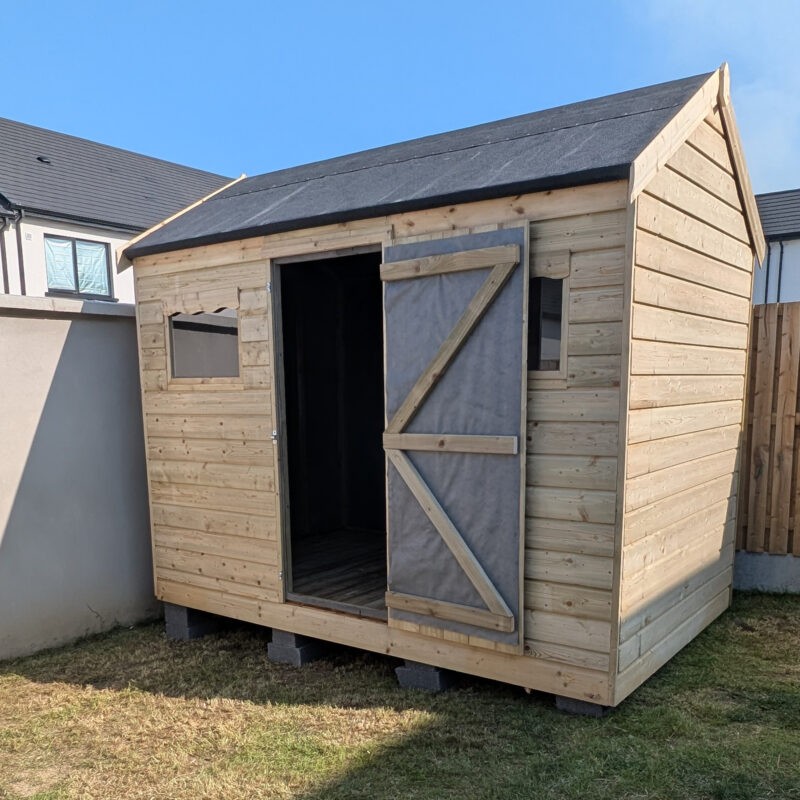
So in this case, the base was particularly uneven. There are two blocks under the shed on the right-hand-side of the image, but three on the left side to try and level it out. You can see that there is already one piece of skirting under the door, but that it doesn’t cover the blocks. In this case, it can’t. The slope here is substantial – there is about 6-7″ inches in the difference between the two sides. So while the blocks on the right side as as hidden as possible, the left side is very much exposed. As the skirting comes in straight boards, it’s impossible to hide them in this particular scenario.
Extra Skirting
Extra skirting is available and there are two ways to look at this:
More than 2 sides’ worth of skirting
If you want to cover each side of your shed, you can order extra skirting at the time of your order. If you’re in-store, let the team know that you want it and they’ll add it to your order. If you’re ordering online, we don’t currently have an add-on options available (it’s a surprisingly large tasks given all the variations), but add a note to your order and it can be added to the outstanding balance to be collected before assembly.
It’s generally not advisable to cover the four sides of your shed, as it can lead to condensation formation. This in turn can lead to mould formation and premature rotting of your shed. If you’re doing it for aesthetic reasons, consider adding a planter in front instead, to allow air flow under your shed. If you’re concerned about rodents, well the skirting isn’t much of a deterrent, anyway – mice and rats will eat through metal when they want to! We recommend tight-knit chicken wire with steel wool throughout, as well as traps under your shed to keep them away. That said, unless you’re in an area prone to rodents, under wooden sheds isn’t a great spot for them, and they tend not to take up residence here, unless there’s no other alternative.
Extra skirting for more-raised-up sheds
We can also provide extra skirting for sheds built on a slope however we do not install this. In these instances, the skirting can be delivered after assembly (for a fee) and you would need to modify this and install it yourself. In the image above, with the shed on a slope, 2 lengths of skirting would be needed. These boards would have to be measured and modified so that the board can run across would impediment. In cases like these, we can only provide the skirting – we can’t offer installation, detailled assistance or guidance. We recommend that you have a level base before your shed is built to avoid scenarios like this.
Why not add enough skirting to cover it all?
Our assembly team won’t know the condition of a customer’s garden until the arrive. While everyone’s base should be level, clearly this isn’t the case. Carrying around excess skirting boards in the assembly van would be a waste of space and fuel – and really, it would only benefit the people who have done no homework before having their shed assembled. The time it takes to add these extra boards would eat into other (often more prepared) customers’ time. So to be fair to all and to keep everything running on time, we provide two lengths of skirting per shed and where more is needed, it can be provided after assembly, for self-assembly, at a cost.
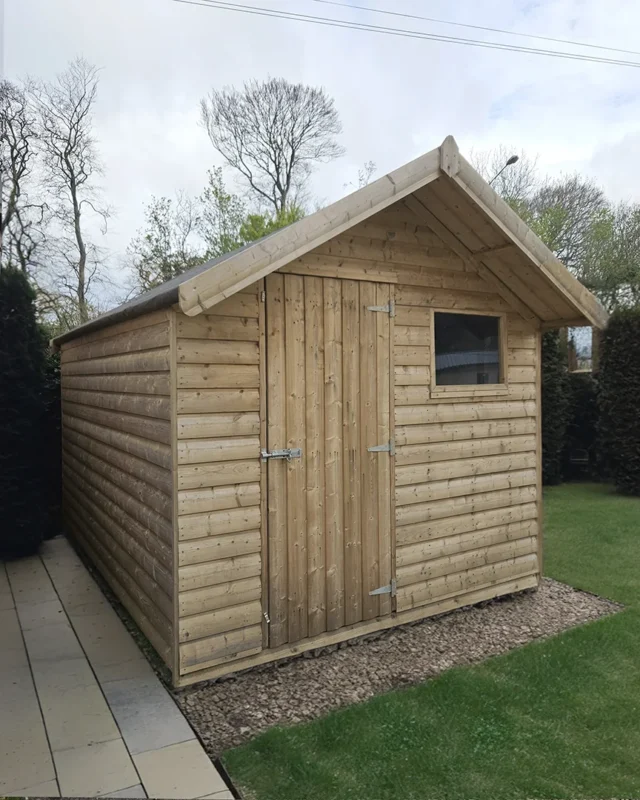
Further reading
If you’re looking to read more about bases for wooden sheds, our blog ‘how to sort a base for your wooden shed‘ is ideal reading.
TLDR Version
- Skirting will not fully hide the blocks under the shed in the majority of cases
- Skirting is only provided for two sides of the shed as standard
- More skirting is available, provided that you get in touch with us first. You should be aware of the potential long-term problems of putting skirting on all four sides.
- After assembly, skirting is available for self-assembly only (i.e. you need to add it on to the shed yourself)



